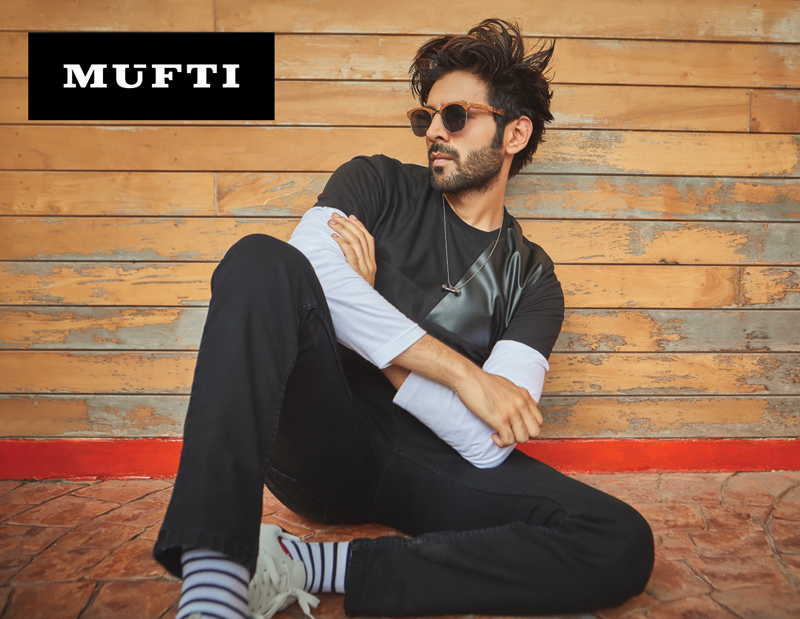News and Features
Mufti strikes a right chord with menswear fashion
16 February 2019
Apparel Resources


Menswear fashion has always witnessed a slower rate of change when compared to womenswear fashion. Yet, it has taken a strong strides to come at par with its counterparts with a rise of 2.8 per cent in 2016, compared to the 1.3 per cent increase in womenswear. Earlier limited to pinstripes, checks and solids, menswear consumers have now matured to adopt trends that are progressive. This transition stems from the rapid inclusion of varied consumer groups owing to fashion, becoming increasingly accessible and a flexible spending power. As per shopify.com, a plunge in buying power is expected by 2020 with the number of potential buyers increasing by 1.2 billion.
Launched in 1998 by First Generation Entrepreneur Kamal Khushlani, Mufti has expanded into multiple categories like shirts, jeans, t-shirts, trousers, blazers, outerwear and footwear, and currently retails through more than 1,500 points of sales across India. The brand revolutionized the basic category of shirts, which were of free-size, in the late-90s by shortening their length and making them tapered at the waist. After a couple of years, they started selling jeans with Lycra and went against the conventional rough and tough denim fabric to suit the needs of the travelling and active consumers. It also created denim joggers to provide durability to althleisures.
“The brand has its roots in India, while the design aspirations and sensibility are international. Our ability to interpret and execute the international trends to suit the Indian consumers give us an edge over the international brands. The consumer groups are getting younger and we are using our resources to create transitional fashion for these consumers,” affirms Vipul Mathur, Chief Operating Officer, Mufti.
Bonding With Consumers
Mufti works on an effective product development system that takes into account all levels of the supply chain. Quality being the highest priority, the system aims to understand the need of manufacturers to deliver products that are at par with what the consumers demand. This cycle starts by incentivising the vendors by implementing a tight payment system that ensures on-the-spot payment to the vendors. “We believe that if we are ensuring the monetary cycle of our vendors, they will stay loyal to us, keep our orders on priority, while providing top-notch quality,” added Mathur.

The second stage is followed by 100 per cent inspection of the products at two levels, one they are received at the warehouse, and secondly during the time of dispatch. The final stage ensures that every product being delivered to the end-consumer. Talking about the process, Mathur added: “We even buy the products that are defective, so they are not sold elsewhere. We sell these products after a gap of two seasons after making sure that all the labels are cut. This is another process, which ensures that the quality is sustained and the brand image is intact.”
Right Click
The consumer psyche is changing with the awareness of global fashion and social media access. A 40-year-old consumer is now pulling off a collegiate bomber jacket effortlessly. As per the market trend that Mufti has been observing, brands that are 20-30 years old are reinventing their entire identity because of the changing mind set.
Tapping the segment of aware consumers, Mufti is leading its e-commerce segment and seeing as an opportunity to consolidate its presence here.
“Our agenda is to reach maximum pincodes through e-commerce. We are investing significantly in the content that can go online to create brand visibility. Our biggest performers are Tata Cliq and Flipkart,” informed Vipul.
Opportunities in All Tiers
With the rise of digital usage, the reach of e-commerce has also increased across the Indian regions. The tier-2 and 3 regions are emerging as a big market, along with the rise in the organised retail in India. Mathur explained the changing market dynamics, with the geographical factors, stating, “The amount of business that happens in one metro is high but the quantum of business that can happen in the peripheral zone is much higher because the market is getting bigger.”
Not just limiting themselves to online expansion to reach the consumers, Mufti has elaborated strategy to expand its bricks-and-mortar presence across all the tiers. “We will start big for the metros by investing aggressively in the flagship stores through a multi-category approach,” confirms Mathur. Then it will focus on tier-2 cities by measuring the performance of existing stores and establishing new stores in proximity to the better-performing outlets.

Finally, the tier-3 segment is being scrutinize on the basis of how the e-commerce demand lies in the area. The higher demand regions will be the new destinations for Mufti stores.
“Another fact online fashion is proving to us is that smaller towns are warming up to the idea of fashion and subsequent costs much before we had anticipated, and hence it is instilling a huge confidence among retailers,” adds Mathur.
Mufti forayed into several new categories to provide a one-stop solution to its consumers. Its footwear category was recently launched in the market and has witnessed a positive response. Also adding an athleisure line to boasts its assortments like t-shirts, joggers, lightweight hoodies. He states, “Not only do people want to wear comfortable but also want to be healthy. Our athleisure line can be worn on a Sunday afternoon or for a lifestyle that is more active.”
Comments

